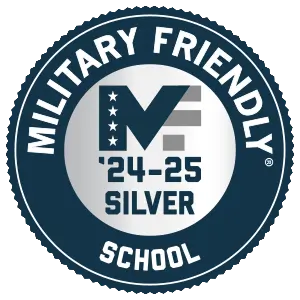How OBC Prepares Nursing Students for the NCLEX-PN Exam

Did you know that you can complete the Practical Nursing diploma program at OBC in as little as 44 weeks? Once you graduate from the LPN program, you are fully qualified to take the NCLEX-PN exam to become a licensed LPN in Ohio and 38 additional states. If you already know how to become a practical nurse, here is how OBC will prepare you for the NCLEX-PN exam.
How OBC Prepares Nursing Students for the NCLEX-PN Exam
OBC plays a crucial role in preparing nursing students for the NCLEX-PN (National Council Licensure Examination for Practical Nurses) exam. We provide a combination of theoretical knowledge, hands-on clinical practice, and exam-specific training to ensure you are well-equipped to pass the exam and succeed in your nursing career. Here’s how OBC prepares nursing students:
Comprehensive Curriculum
OBC’s comprehensive curriculum aligns with the NCLEX-PN test plan, covering all key areas:
● Foundations of Nursing: Basic nursing skills, patient care, and ethical/legal responsibilities.
● Medical-Surgical Nursing: Care for patients with acute and chronic illnesses.
● Pediatrics and Maternity Nursing: Focus on child and maternal health care.
● Mental Health Nursing: Addressing psychological and emotional well-being.
● Pharmacology: Understanding medications, their effects, and proper administration.
● Clerical Administration: maintaining patient records and document patient care
Emphasis on Test Plan Categories
The NCLEX-PN exam is organized into specific categories, and OBC tailors our instruction accordingly:
● Safe and Effective Care Environment: Patient safety, infection control, and facility protocols.
● Health Promotion and Maintenance: Preventive care and patient education.
● Psychosocial Integrity: Emotional and mental health care.
● Physiological Integrity: Managing patient care and prioritizing tasks.
Hands-On Clinical Training
OBC provides state-of-the-art labs where students practice skills in a controlled environment using realistic patient scenarios. Students gain real-world experience by working in hospitals, clinics, and long-term care facilities under the supervision of licensed professionals. Frequent evaluations ensure students are proficient in practical nursing tasks like wound care, IV insertion, and medication administration.
NCLEX-PN Prep Courses
OBC includes a dedicated NCLEX-PN preparation course and integrates prep material into the curriculum. We help students review instruction on how to approach multiple-choice and alternative-format questions. We also offer simulated NCLEX exams to help students familiarize themselves with the test format and timing. We make sure students have targeted study sessions to address weak areas.
Supportive Learning Environment
OBC offers various support systems to help students succeed. We offer personalized help for students who need extra assistance in specific subjects. Students can access collaborative learning opportunities to reinforce knowledge. We also offer libraries, online platforms, and study guides tailored to the NCLEX-PN.
Critical Thinking and Decision-Making Skills
During the curriculum at OBC, students analyze real-world scenarios to develop clinical judgment. They get training to prioritize patient care tasks effectively, a key focus of the NCLEX-PN.
Regular Assessments and Feedback
Frequent testing helps students track their progress and identify knowledge gaps. Instructors offer constructive input to ensure students are aware of areas needing improvement.
OBC provides a well-rounded approach to NCLEX-PN preparation, combining academic instruction, practical experience, and test-taking strategies. This comprehensive training not only prepares students for the exam but also equips them with the skills and confidence needed for a successful nursing career.
How to Start Studying for the NCLEX-PN Exam
Preparing for the NCLEX-PN exam requires strategic planning and hard work. Here’s a step-by-step guide to help you start studying for the NCLEX-PN exam:
Step #1: Understand the NCLEX-PN Exam Structure
Before going through study materials, familiarize yourself with the exam’s structure and content. The exam is a computer-adaptive testing (CAT) with 85 to 205 questions. Multiple-choice, fill-in-the-blank, ordered response, and hotspot questions.
Step #2: Assess Your Starting Point
When you start studying, take a diagnostic test or review your recent coursework to determine which topics you need to focus on. Create a study timeline leading up to your exam date, breaking it down into manageable chunks.
Step #3: Gather Study Materials
Next, download the official test plan from the National Council of State Boards of Nursing (NCSBN) website. Prepare by using online platforms or apps with NCLEX-PN practice questions and tests. You can also use physical or digital flashcards for quick reviews of key terms and concepts.
Step #4: Create a Study Schedule
When you create a study schedule, make sure to allocate consistent study hours daily, focusing on different content areas each day. Make sure to incorporate short breaks to maintain focus and prevent burnout. Also, schedule full-length practice exams to build stamina and track progress.
Step #5: Develop Test-Taking Strategies
When you are taking the test, make sure to identify keywords and avoid overthinking. If you are stuck, narrow down choices to increase your odds of selecting the correct one. Make sure you understand Maslow’s hierarchy of needs and the nursing process (Assessment, Diagnosis, Planning, Implementation, Evaluation).
Step #6. Utilize Practice Questions Daily
Begin with a few practice questions each day, gradually increasing the number. It is important to review both correct and incorrect answers to understand the rationale. Also, take timed practice tests to build confidence.
Step #7: Join a Study Group
It can be easier to study in a group. Your fellow classmates may be strong in an area you are weak on, and vice versa. You can help each other improve your knowledge of weak subjects. Also, collaborating with peers can provide motivation, clarify difficult concepts, and allow for shared resources.
Step #8: Take Care of Yourself
When you are studying for the NCLES-PN exam ensure you get adequate rest to retain information and stay focused. Always eat balanced meals to maintain energy levels. Regular physical activity reduces stress and improves mental clarity.
Step #9: Review the Night Before the Exam
The night before the exam, make sure to focus on high-yield topics and avoid cramming. Be ready for exam day by preparing everything you need for test day, including valid ID and test confirmation.
Step #10: Stay Confident on Exam Day
The day of the exam, make sure to arrive early, stay calm, and trust your preparation. Remember, the NCLEX-PN is designed to test your readiness, not trick you.
What is a Computer Adaptive Test?
The NCLEX-PN is a computer adaptive test, but what does that mean for students taking the exam? A Computer Adaptive Test (CAT) is a type of exam that adjusts the difficulty of questions based on the test-taker’s performance in real-time. It helps provide an accurate measure of a test-taker’s ability or knowledge level by tailoring the questions to their proficiency.
How a Computer Adaptive Test Works
The test begins with a question of medium difficulty. Your response to this question determines the difficulty level of the next question. If you answer correctly, the next question will be slightly more challenging. If you answer incorrectly, the next question will be easier. The system continually narrows down your ability level by selecting questions that match your estimated knowledge or skill. The final score isn’t based on the number of questions answered correctly but rather on the difficulty level of the questions you were able to answer consistently.
Key Features of CAT
Questions become harder or easier depending on your answers. The test ends once the system determines your ability level with sufficient confidence. CAT exams do not have a fixed number of questions. For example, the NCLEX-PN exam may have between 85 to 205 questions, depending on how quickly your ability level is assessed. Each exam has a maximum time allowed, but you may finish earlier if your proficiency is determined sooner.
Advantages of CAT
The CAT exam has its advantages. The test adapts to your level, making it more efficient and targeted. By focusing on your ability range, the system avoids unnecessary questions. Each test-taker is measured based on their individual performance.
Challenges of CAT
This type of test can be challenging. Early mistakes can impact subsequent questions and create stress. Since each question influences the next, you cannot skip or return to previous questions. Plus, the adaptive nature makes it hard to gauge how well you are doing during the test.
Want to Learn More?
Want to make an impact on your local community? OBC offers a Practical Nursing program that will train you for entry-level positions while integrating the future of healthcare for improved patient outcomes.
Practical Nursing Program
The Practical Nursing (PN) Program provided by OBC is 44 weeks or four quarters long. The program covers theory, nursing skills lab, simulation lab, and clinical experiences. Once you graduate from the PN program, you will be fully qualified to write to the NCLEX-PN® to become licensed as an LPN in Ohio.
Contact us today to learn more about our LPN program.

